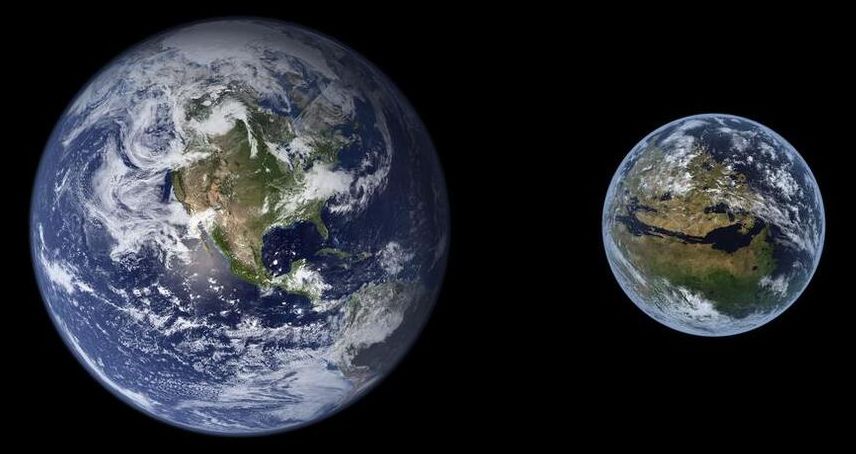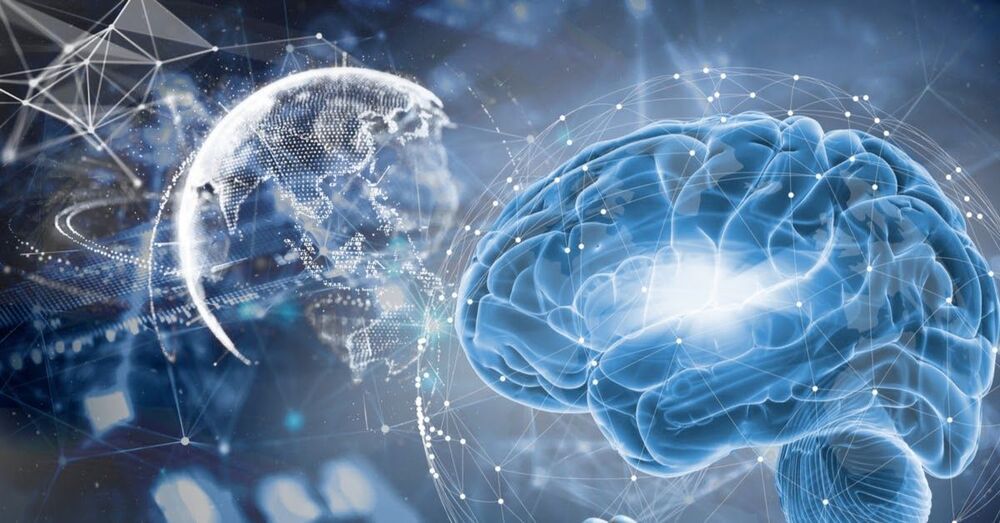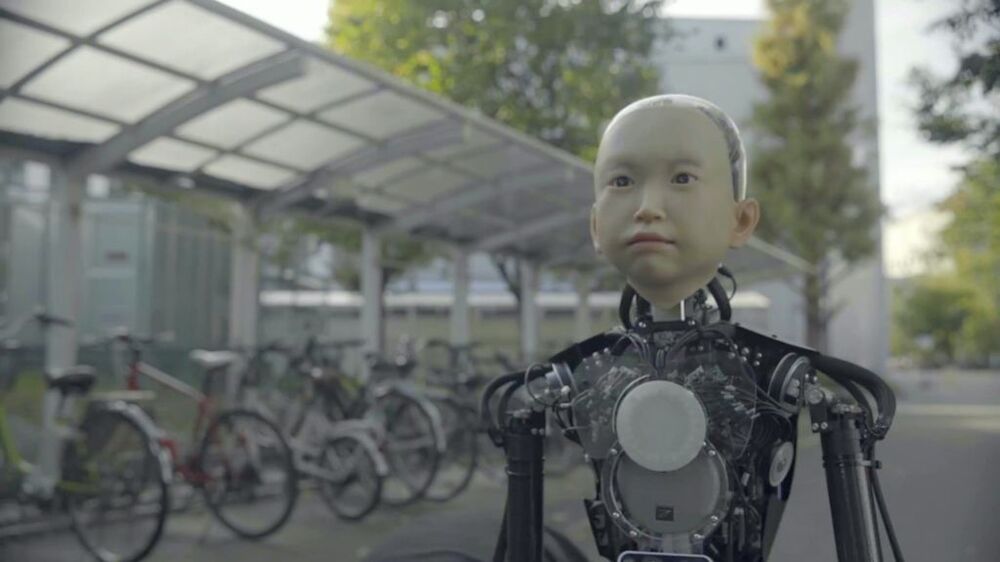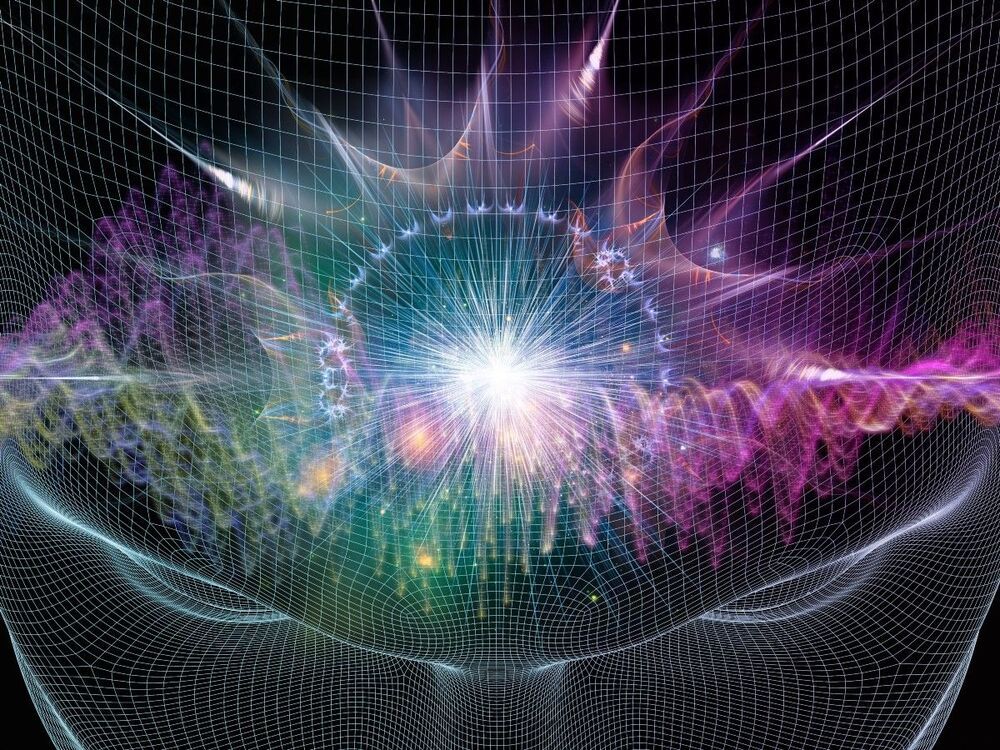Category: singularity – Page 54
CRISPR, AI & Brain-Machine Interface: The Future Is Faster Than You Think, Peter Diamandis
The only thing bad about Star Trek was they made the Borg evil.
Emerging technologies have unprecedented potential to solve some of the world’s most pressing issues. Among the most powerful — and controversial — is the gene-editing tech, CRISPR-Cas9, which will improve agricultural yields, cure genetic disorders, and eradicate infectious diseases like malaria. But CRISPR and other disruptive technologies, like brain-machine interfaces and artificial intelligence, also pose complex philosophical and ethical questions. Perhaps no one is better acquainted with these questions than Peter Diamandis, founder of the XPRIZE Foundation and co-founder of Singularity University and Human Longevity Inc. In this session, Peter will give a state of the union on the near future and explore the profound ethical implications we will face in the ongoing technological revolution.
This talk was recorded at Summit LA19.
Interested in attending Summit events? Apply to attend : https://summit.co/apply.
Connect with us:

Approaching a Singularity, When The Number of Humans Alive Will Equal The Number Who Have Ever Died
There are several key technologies converging on an inevitable effect, namely a dramatic, explosive increase in human population. Currently around 40% of Earth’s total land area is dedicated to agricultural production to feed seven billion people, but, interestingly, while the human population will increase, the land area required to sustain this population will decrease, approaching zero land area to sustain a trillion human lives. In this era, bulk elements such as gold will have no value, since they will be so easy to produce by fusion separation of elements from bulk rock. Instead, value will be attached to biological material and, most importantly, new technologies themselves.
The several key emerging technologies that make this state of affairs unstoppable are listed along with aspects of their impact:
1) Most important is fusion energy, an unlimited, scalable energy, with no special fuel required to sustain it. This will allow nearly all agriculture to be contained in underground “vertical farm” buildings, extending thousands of feet downwards. Cheap artificially-lighted, climate-controlled environments will allow the maximum efficiency for all food crops. Thus, agriculture will take up close to zero surface area, largely produced underground on Earth or the Moon.
2) Crispr-gene edited foods, allowing the transformation of thousands of currently inedible plants into new types of fruits, vegetables and cereals, while also allowing diversity of currently-existing ones. Everything people eat has been genetically modified by thousands of years of human cultivation; that modification will take place over several years instead of thousands.
3) Acellular agriculture, where yeasts are bioengineered to produce milk and other proteins without any live mammals. Products using this method began to enter the market in 2020.
4) Cell-base meat, the production of animal meat in bioreactors, without the need for killing of animals. This will also broaden the choices of widely-available meats from a few bulk types, such as beef, pork and chicken, to thousands of choices.
5) Micro-organism farming, as with the “Solar Foods” company’s use of micro-organisms to produce limitless quantities of protein, fats and carbohydrates in bioreactors.

Transcendental Cybernetics: Imagining the Technological Singularity
The Syntellect Emergence seems to be a cosmic necessity, and in the long run, any voices calling to resist the cybernetic fusion of the mind will be no more influential than the voices calling, right now, to eradicate civilization and return to the jungle. Nature’s tendency to build up hierarchies of emergent patterns, the heuristic law of evolution, supersedes the human race itself. We see it time and again, Nature is constantly trying to combine seemingly opposing forces, to assemble existing parts into the new wholes through the universal process of radical emergence. We are bound to transcend our biology, our human condition, our limited dimensionality, we are bound to transcend ourselves.
#TranscendentalCybernetics #CyberneticSingularity #SyntellectEmergence
Syntellect Emergence is hypothesized to be the next meta-system transition, becoming one Global Mind — that constitutes the Cybernetic Singularity.

‘Artificial Immortality’: Watch The First Trailer For Hot Docs Opener About AI & Biotech
The film features Nick Bostrom, author of Superintelligence; Japanese roboticist, Hiroshi Ishiguro; Douglas Rushkoff, author of Team Human; Ben Goertzel, founder of Singularity.net; and Deepak Chopra, who is creating his own A.I. mind twin.
EXCLUSIVE: Here’s the first trailer for Hot Docs opener Artificial Immortality by filmmaker Ann Shin.
The documentary explores the latest advancements in AI, robotics and biotech with visionaries who argue for a new age of post-biological life. It poses the questions: if you were able to create an immortal version of yourself, would you?; and will AI be the best, or the last thing we ever do as a species?

Basque ‘genetic singularity’ confirmed in largest-ever study
O,.o.
The largest-ever study of almost 2000 DNA samples carried out by researchers at Pompeu Fabra university (UPF) in Barcelona has confirmed the “genetic singularity” of the Basques in Europe. The investigation, however, found that this difference only began to emerge 2500 years ago in the Iron Age. “Our analyses confirm that Basques were influenced by the major migration waves in Europe until the Iron Age, in a similar pattern as their surrounding populations,” the authors explain in the study published in the journal Current Biology.
The origin of the Basques has fascinated the scientific community since the 19th century. The French anthropologist Paul Broca snuck into a Basque cemetery one night in 1862 to steal skulls he wanted to study for their supposed genetic differences. Juan José Ibarretxe, premier of the Basque regional government until 2009, proclaimed that the Basque people “have existed for 7000 years” to promote his vision of an independent Basque state. And the then-president of the Basque Nationalist Party (PNV), Xabier Arzalluz, claimed in 2000 that the Basques were “the oldest inhabitants of Europe,” with “their own roots” since prehistoric times.
Although Basque genetic differences are noticeable, the study shows this is the result of centuries of isolation and inbreeding potentially caused by unique Basque dialects that have no crossover with other European languages, or indeed any other living language today.
Dr Shawna Pandya MD — Physician, Scientist, Astronaut Candidate, Aquanaut, Martial Artist, Sky-Diver
Dr. Shawna Pandya MD, is a scientist-astronaut candidate with Project PoSSUM, physician, aquanaut, speaker, martial artist, advanced diver, skydiver, and pilot-in-training.
Dr. Pandya is also the VP of Immersive Medicine with the virtual reality healthcare company, Luxsonic Technologies, Director of the International Institute of Astronautical Sciences (IIAS)/PoSSUM Space Medicine Group, Chief Instructor of the IIAS/PoSSUM Operational Space Medicine course, Director of Medical Research at Orbital Assembly Construction (a company building the world’s first rotating space station providing the first artificial gravity habitat), clinical lecturer at the University of Alberta, podcast host with the World Extreme Medicine’s WEMCast series, Primary Investigator (PI) for the Shad Canada-Blue Origin student micro-gravity competition, member of the ASCEND 2021 Guiding Coalition, Life Sciences Team Lead for the Association of Spaceflight Professionals, sesional lecturer for the “Technology and the Future of Medicine,” course at the University of Alberta, and Fellow of the Explorers’ Club.
Dr. Pandya also serves as medical advisor to several space, medical and technology companies, including Mission: Space Food, Gennesys and Aquanauta, as well as the Jasper Dark Sky Festival Advisory Committee.
Dr. Pandya holds a Bsc degree in neuroscience from University of Alberta, a MSc in Space Studies from International Space University, an MD from University of Alberta, and a certification in entrepreneurship from the Graduate Studies Program at Singularity University.
Dr. Pandya is currently completing a fellowship in Wilderness Medicine (Academy of Wilderness Medicine), was granted an Honorary Fellowship in Extreme and Wilderness Medicine by the World Extreme Medicine organization in 2021, and was one of 50 physicians selected to attend the 2021 European Space Agency Space Medicine Physician Training Course. Dr. Pandya was named one of the Women’s Executive Network’s Top 100 Most Powerful Women in Canada in 2021, and a Canadian Space Agency Space Ambassador in 2021.
Dr. Pandya was part of the first crew to test a commercial spacesuit in zero-gravity in 2015. Dr. Pandya earned her aquanaut designation during the 2019 NEPTUNE (Nautical Experiments in Physiology, Technology and Underwater Exploration) mission. She previously served as Commander during a 2020 tour at the Mars Desert Research Station. Her expeditions were captured in the Land Rover short, released with the Apollo 11: First Steps film. She previously interned at ESA’s European Astronaut Center and NASA’s Johnson Space Center.

First Look Over the Event Horizon of Singularity: Your Future Life as a Cyberhuman
The lives of infomorphs (or ‘cyberhumans’) who have no permanent bodies but possess near-perfect information-handling abilities, will be dramatically different from ours. Infomorphs will achieve the ultimate morphological freedom. Any infomorph will be able to have multiple cybernetic bodies which can be assembled and dissembled at will by nanobots in the physical world if deemed necessary, otherwise most time will be spent in the multitude of virtual bodies in virtual enviro… See More.
“I am not a thing — a noun. I seem to be a verb, an evolutionary process — an integral function of the Universe.” — Buckminster Fuller
The term ‘Infomorph’ was first introduced in “The Silicon Man” by Charles Platt in 1991 and later popularized by Alexander Chislenko in his paper “Networking in the Mind Age”: “The growing reliance of system connections on functional, rather than physical, proximity of their elements will dramatically transform the notions of personhood and identity and create a new community of distributed ‘infomorphs’ — advanced informational entities — that will bring the ongoing process of liberation of functional structures from material dependence to its logical conclusions. The infomorph society will be built on new organizational principles and will represent a blend of a superliquid economy, cyberspace anarchy and advanced consciousness.”
The new post-Singularity system will inherit many of today’s structures but at the same time will develop new traits beyond our current human comprehension. The ability of future machines and posthumans alike to instantly transfer knowledge and directly share experiences with each other will lead to evolution of intelligence from the hive ontology of individual biological minds to the global hyperconnected society of digital minds.

Collective Superintelligence Summit (Early Bird)
Your Survival Depends On All Of Us — Support Open Sourcing Collective Superintelligence Basically, the point of the summit is Artificial Superintelligence or ASI is coming eventually. There are groups of organizations discussing the existential risk that ASI poses to humanity. Even if we only develop an AGI, AGI will still create ASI and we lose control at some point. Supporting the Open Sourcing of Collective Superintelligent systems is our only hope for keeping up and moves us forward before other technologies outpace our ability to keep up. Please support our Summit and help decide how to open source a version of the mASI (mediated Artificial Superintelligence) system, and the creation of a community-driven effort to make these systems better and better. Attendance helps to raise enough money to cover the costs of support services, cloud infrastructure, and the digital resources needed to get this open-source project up, covering publishing and support costs, while also making people aware of it. Papers and formal thinking also are really needed. This particular field of collective intelligence is poorly represented in terms of scientific papers and we hope this project can bring more prominence to this possibility of helping humanity become more than what we are and strong enough to contain AGI while we ourselves are able to become smarter and move to full digitization of humanity for those that want it. Then we can contain ASI safely and embrace the singularity. Please help, save yourself and humanity by support the Collective Superintelligence Conference. Sign up and attend here:
This is the early bird sign-up for the virtual summit held June 4th from 6 am PST to 4 pm PST via Zoom and Youtube. Speakers and Panelists, and workshops will be held in Zoom, and streaming will be done via Youtube.
Who is Running the Summit:
This summit is run in conjunction with BICA (Biologically Inspired Cognitive Architecture) Society and the AGI Laboratory, and The Foundation.

Kernel the most powerful neural interface in the world
Flux is unmatched in the quality, speed and quantity of neural activity that can record non-invasively and in real time.
So far, all types of data that could be acquired directly from the human brain had serious limitations. To get the best hemodynamic or electric data, for example, the person and their brain needed to be almost perfectly immovable, usually by confinement in noisy and claustrophobic environments. And if the person was able to move freely and, of course, data quality quickly dropped until it was pointless.
With the Flux, you will be able to:
Step into a natural environment, put a helmet on your head and observe the real-time brain activity at the top speed your neurons are shooting;
Talk, gesture and move naturally;
Participate in a video conference, daydream, listen to music or read a book;
Access your brain activity from the most electrophysiological sensor channels from all regions of the cortex.
These capabilities open up new stimulating opportunities for understanding how and why the brain functions.
In October 2020, Flow was announced, a full-coverage TD-FNIRS system, which is the first high-quality scalable brain imaging system of its kind and analyses the hemodynamic signs generated by the use of oxygen in the brain, a good proxy for neural activity Together, Flow and Flux capture two signs of the highest quality and most significant one can capture on the brain in a non-invasive way: blood oxygenation and direct neural activity. There are advantages and disadvantages to what each of these technologies reveals about the mysteries of the brain — together, however, Kernel Flux and Flow combine into the richest neural data sets in history, collected at a record speed.
A new era is here. One where we will be reintroduced ourselves and each other in unique ways. With powers to advance to a new border.
#transhumanismo #singularity #singularidade #BCI #kernel